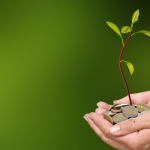Executive Summary
-
Discover the critical role of risk management in sustainable agriculture funds.
-
Understand the benefits and potential challenges associated with these investment vehicles.
-
Learn practical strategies for mitigating risks in sustainable agriculture investments.
-
Explore real-world examples and expert insights to guide your investment decisions.
Introduction
Sustainable agriculture funds are gaining popularity as a smart way for investors to blend financial returns with positive environmental impact. But behind the promise lies a complex risk environment—from unpredictable weather to shifting regulations. Managing these risks is essential for long-term success. This article offers a deep dive into how to navigate the risk landscape of sustainable agriculture funds, balancing profit with purpose.
Definitions / Context
Sustainable agriculture funds allocate capital to environmentally responsible farming practices such as organic farming, agroforestry, regenerative agriculture, and conservation-based systems. These funds not only aim for financial returns but also target improvements in biodiversity, soil health, and community development. Risk management plays a central role in preserving both financial and ecological returns over time.
Benefits / Pros
Investors in sustainable agriculture enjoy several key advantages. These include contributing to lower greenhouse gas emissions and supporting food systems that are less dependent on harmful chemicals. There’s also rising consumer demand for sustainably sourced goods, which creates market-driven growth. Add to that a wide range of available projects—from organic farms to tech-driven agriculture platforms—and you have an inherently diversified portfolio. Finally, many national policies and international regulations favor sustainability, offering subsidies and incentives to investors in this space.
Risks / Cons / Challenges
Despite the benefits, sustainable agriculture is not without its risks. Climate variability is a major factor—droughts, floods, and heatwaves can drastically affect output. Price swings in agricultural commodities can undercut revenue, especially for newer funds. Furthermore, government policies regarding land use, water rights, or subsidies can change rapidly, impacting long-term planning. Operationally, implementing sustainable practices often involves steep learning curves, capital investment, and access to skilled labor.
How to Evaluate a Sustainable Agriculture Fund
-
Research Fund Performance: Study long-term and short-term metrics across different economic cycles.
-
Assess Sustainability Credentials: Confirm the fund meets high ESG standards and maintains transparent reporting.
-
Evaluate Risk Management Strategies: Look for use of crop insurance, geographic diversification, and tech integration.
-
Consult Experts: Collaborate with sustainability advisors and agricultural analysts to interpret key indicators.
GreenHarvest Fund diversified its investments across organic farms, agroforestry projects, and regenerative agriculture initiatives. To counter climate-related risks, the fund integrated advanced weather analytics and partnered with local co-operatives to strengthen regional supply chains. As a result, GreenHarvest maintained consistent 12–14% annual returns even in years with erratic weather events.
– GreenHarvest Fund
Expert Tips / Strategic Insights
Epiidosis recommends a multi-pronged risk mitigation strategy. Diversify across regions to minimize the impact of local weather or political shifts. Leverage technology—such as IoT soil sensors and AI-powered irrigation systems—to optimize inputs and reduce waste. Regularly monitor evolving regulations related to water use, pesticide bans, and biodiversity conservation. Risk management must be proactive, not reactive.
Tools / Resources / Calculators
-
Sustainable Agriculture Checklist – Evaluate projects for long-term ecological and financial health.
-
ROI Calculator – Estimate potential returns based on sustainability metrics and commodity price trends.
-
Industry Reports – Access global market analyses from organizations like the FAO and World Resources Institute.
Conclusion
Risk management isn’t just a safeguard—it’s a strategy. In sustainable agriculture investing, where natural and regulatory forces shape outcomes, having a robust risk framework is essential. Investors who embrace technology, diversification, and due diligence can turn uncertainties into opportunities. Aligning financial goals with environmental responsibility has never been more achievable—or more necessary.























